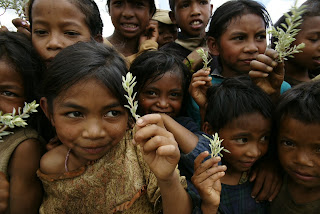
Cristina is featured on Sony Style | USA blog
Check it out!



 There are few smells I love more than that of my daughter’s skin and the early morning air in the tropical forest. There is no other smell like it. It hits you with the power of a thousand different blossoms, promised rain, and the musty scent of moist dirt and mossy shade. It truly fills your lungs and your soul with the rich aroma of mother earth at her very best.
There are few smells I love more than that of my daughter’s skin and the early morning air in the tropical forest. There is no other smell like it. It hits you with the power of a thousand different blossoms, promised rain, and the musty scent of moist dirt and mossy shade. It truly fills your lungs and your soul with the rich aroma of mother earth at her very best.


 Although I was raised in a pretty observant Mexican Catholic family, it has been a couple of decades since I last sat through mass. Today, however, we waited on two masses and one rosary to get our shooting done; more than my fair share for at least another 20 years.
Although I was raised in a pretty observant Mexican Catholic family, it has been a couple of decades since I last sat through mass. Today, however, we waited on two masses and one rosary to get our shooting done; more than my fair share for at least another 20 years.


Read more photographer blogs from the Yucatan RAVE
Learn More about the Yucatan RAVE


 hased the bull around for a few minutes and it looks tired enough, a gang of up to 20 horses erupt into the rodeo and compete to lasso the bull. The bleachers explode in cheers every time the bull comes near a horse. The lady sitting next to us explains that the previous weekend four horses were gored and gutted by the bull; all of them died.
hased the bull around for a few minutes and it looks tired enough, a gang of up to 20 horses erupt into the rodeo and compete to lasso the bull. The bleachers explode in cheers every time the bull comes near a horse. The lady sitting next to us explains that the previous weekend four horses were gored and gutted by the bull; all of them died.
Images from the Yucatan RAVE will be highlighted at WILD9 November 6-13, 2009


The assignment Jenny and I have for this part of the RAVE deals with the fishing communities in this area and their intimate dependence on healthy marine ecosystems. Octopus is the main catch this time of year. Hundreds of small boats carrying 3-4 four men leave the port every morning. They spend the whole day fishing off the coast in tiny satellite boats, called “alijos” that are lowered from the larger vessel. One man sits in each alijo, under a murderous sun, baiting lines with large crabs. Their prey is a small species of octopus, which most be very plentiful, as the fishermen come back with load after load of the wiggly creature.

People are immensely nice here. Everyone offers help and information without much nudging and despite the troubles that dominate much of the rest of Mexico, the Yucatan peninsula remains safe and very pleasant. As I move around the various fishing villages, people are quick to smile and show me their catch. They take the time to explain how they fish and the travails of their profession. The only real dangers are the police barricades we encounter every once in a while. They are more dangerous because they have poor signage and are difficult to see when traveling fast on the highway. The officers assure me it is safe and that the barricade is just a way to maintain a close eye on shady characters that might be transporting drugs. Apparently, this is not a big issue in this part of Mexico.

The best part of being assigned to shooting people during a RAVE is that we get to sleep in little towns where it is possible to find a hotel with clean sheets and a fan. Water, as we are finding out is intermittent and optional.

"As someone whose work explores the edge between healthy ecosystems and healthy people, I am most often confronted with the opposite. A planet that is rapidly losing the functionality of the very ecosystems that provide the water, food, air, shelter and medicine that we all need, but that the poorest of the poor intimately depend on. It would be easy to exploit this drama, but with my images I refuse to fulfill the prophecy of their desperate situation. I am often reminded that despite the worse challenges, people, and especially children often have reasons to be happy and that is how I choose to portray them. I want my work to bring back the dignified, hopeful attitude of the people I meet. The common thread in their lives and mine is that they too rise up every morning hoping things will get better. " - Cristina MittermeierImage taken in Madagascar, January 2009



